Sharing is caring!
St. Joseph’s Feast Day usually falls during Lent, and always falls on March 19. (He is actually one of the few saints to have two feast days – his other feast day is on May 1st and celebrates his role as St. Joseph the Worker).
St. Joseph’s March feast day is to celebrate his role as Jesus’ foster father and Mary’s spouse.
A favorite Italian tradition to celebrate St. Joseph’s Day is The St. Joseph Feast Day Table also known as St. Joseph’s Altar.
Today, I will describe how to set up and cook for your own St. Joseph’s Table to celebrate his feast day.
For more ideas on how to celebrate this wonderful feast day, be sure to check out my friend Jen’s post over at Eva to Ave!
Our St. Joseph plushie below is from Shining Light Dolls. The candle wraps and printables are from Catholic Icing.
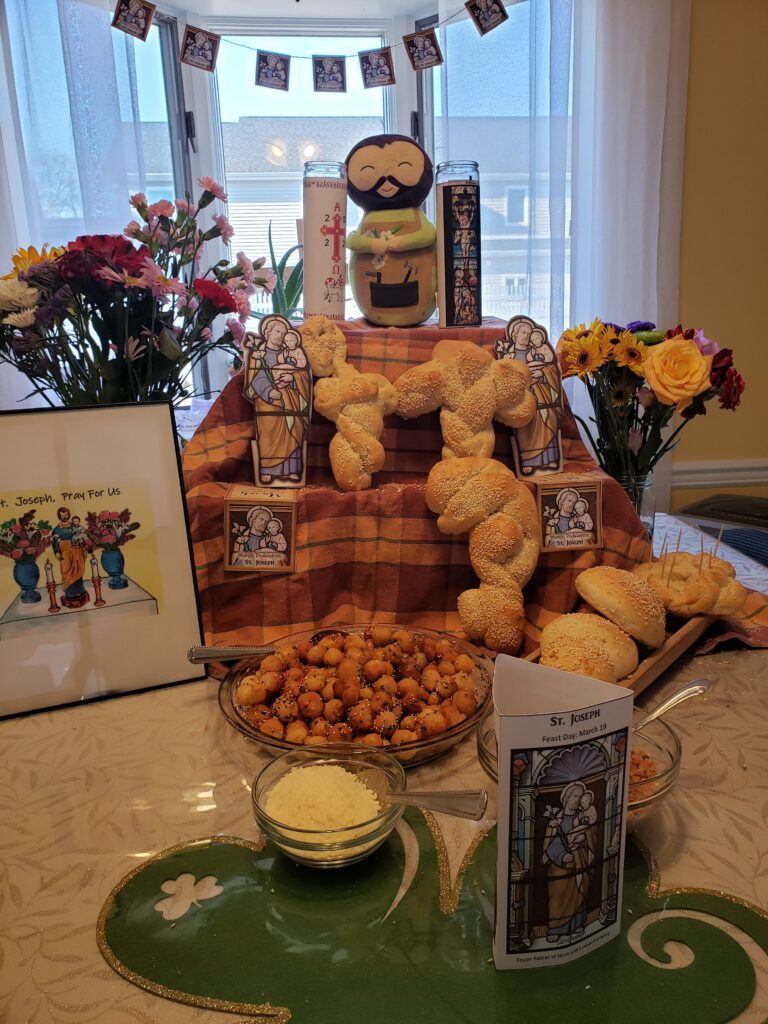
Interesting Facts About Saint Joseph
Here are some fast facts to introduce you to St. Joseph:
- He is the foster father of Jesus and was married to the Blessed Virgin Mary
- He says no words or lines in the entire bible
- An angel came to him in a dream to tell him that he would be the father of Jesus
- He vision of an angel in his dream telling him to flee from Bethlehem since Herod planned to massacre all of the infants under 2 years old. He then fled to Egypt with Jesus and Mary.
- He raised Jesus with Mary in Nazareth
- He was a carpenter by trade and taught Jesus carpentry skills
- He is the patron of fathers and of the family
Stations of the Cross and Stabat Mater Activity Book and Mini Books
St. Joseph's Day Table
Italian Catholics especially love St. Joseph, and honor him with a St. Joseph’s Table (also known as a St. Joseph’s Altar).
The table is set up with multiple levels or tiers and LOTS of delicious Italian food and goodies. Many of the recipes are meatless in observance of the Lenten season, but there is usually an overabundance of food and fun for this feast.
The table is also all about almsgiving! Traditionally, no one should be turned away from the St. Joseph Table, and the poor were always invited to partake in the feast.
You can read more details about the beautiful history and symbolism of the table here.
How to create a St. Joseph Table
Creating the tiers for a St. Joseph table is simple.
Depending on how many people you plan to feed, you can use multiple tables, an entire table, or just part of your table.
The table top will be the lowest “level” to display your food. You can then use cardboard or wooden boxes to build higher steps or levels.
Many people like to have at least 3 levels to represent the Holy Trinity.
The table is usually also covered with white linens, but I have just used whatever tablecloths I have on hand in a pinch!
It is also traditional to include photos and statues of St. Joseph, as well as lilies (he is usually seen holding lilies to symbolize purity) or other springtime flowers. You can also add blessed candles and holy cards.

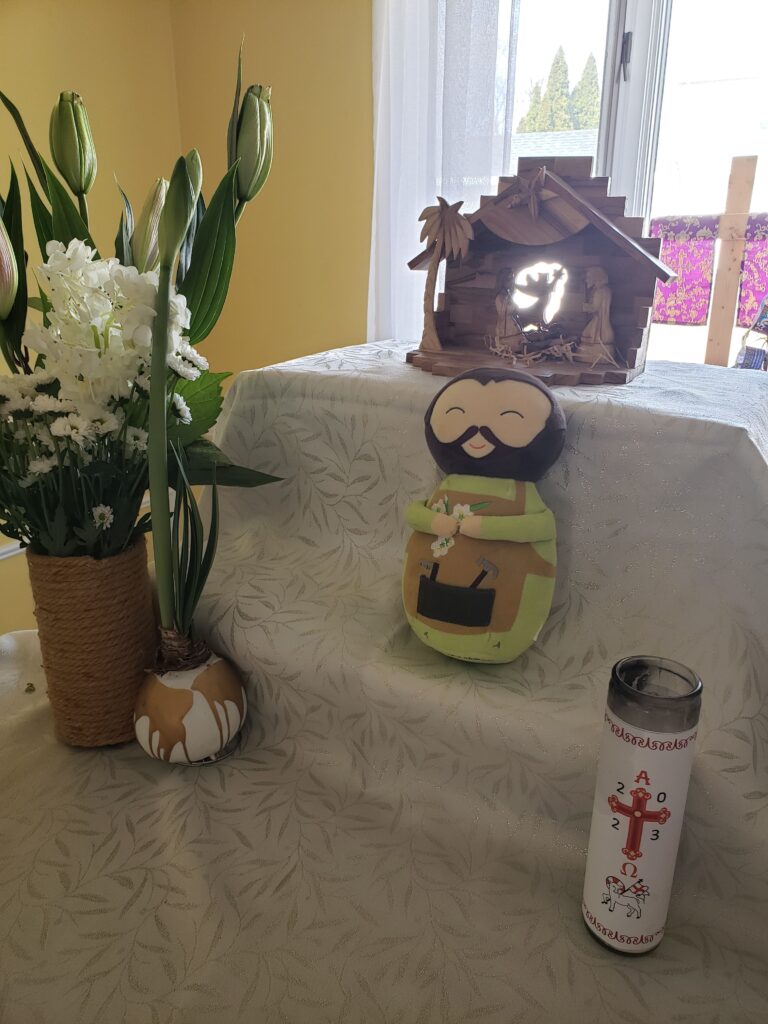
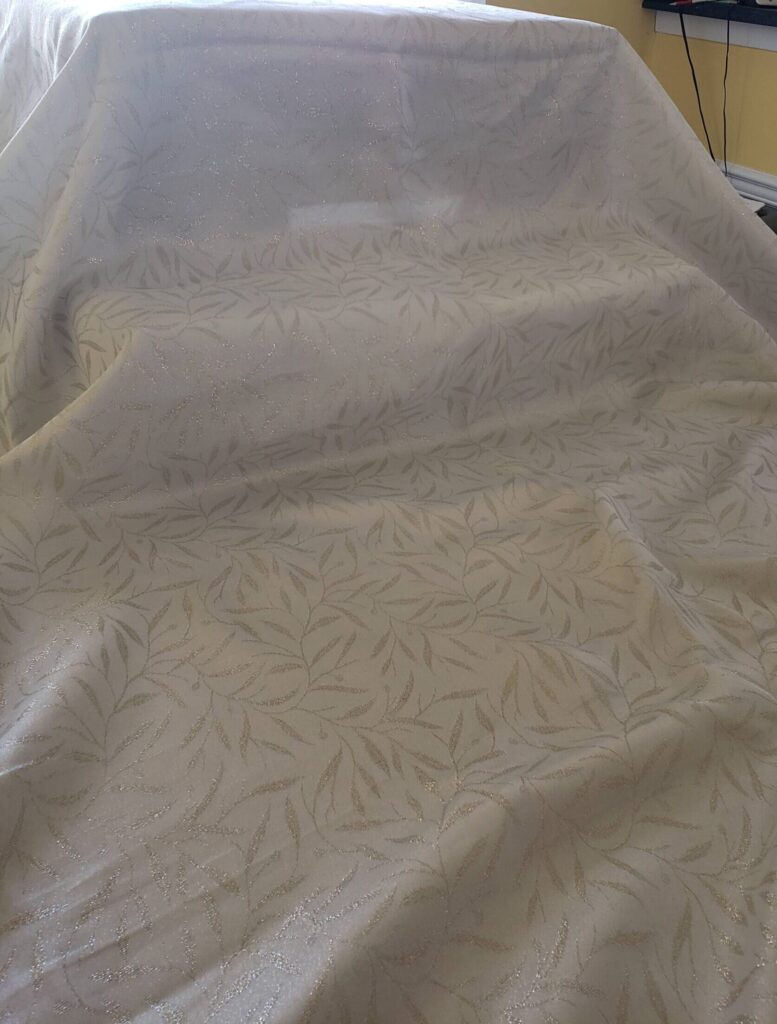
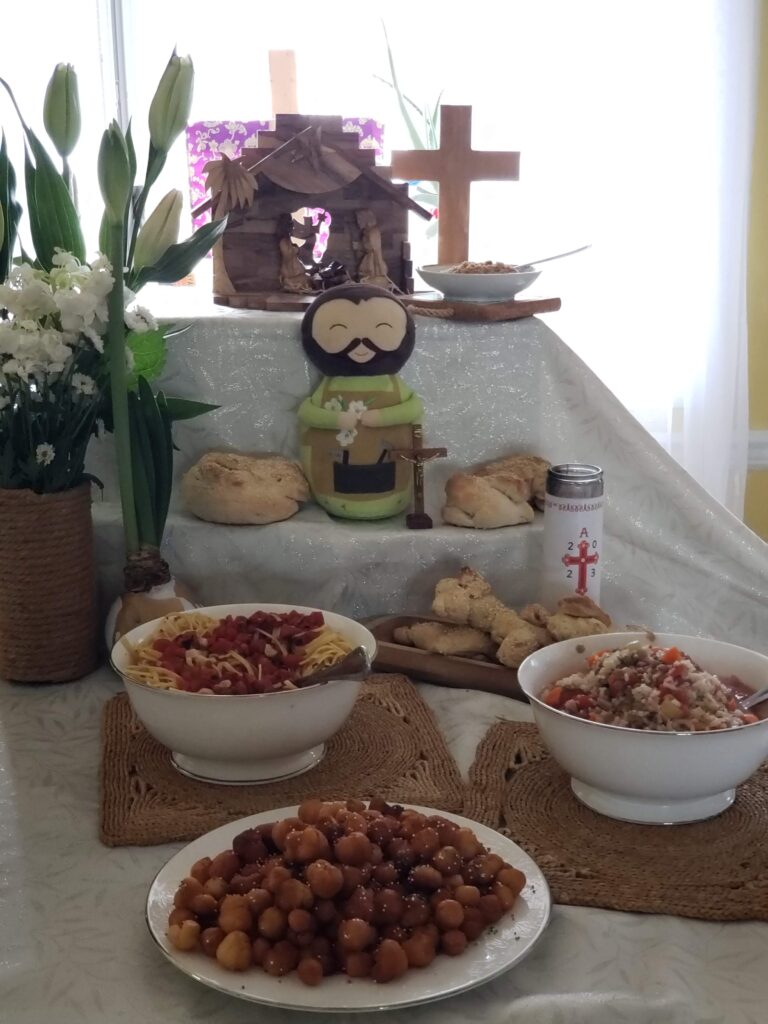
St. Joseph Feast Day Recipes
Now that you have prepared your display, it is time to make the food! You may wish to include any or all of the following on your table:
- Bread baked into symbolic religious shapes such as a cross, a crown of thorns, a shepherd’s staff, a hammer, a fish, a “Bambino” (to symbolize baby Jesus, or even St. Joseph himself! For the bread, you can buy premade pizza dough from the store, shape it, sprinkle it with sesame seeds and bake it! I did this for our parish’s celebration of St. Joseph and it was a huge hit! You could also use a favorite pizza dough recipe. To make a cross, roll out 3 long, thin logs of dough and braid them. Then, cut a small piece off of the long braid to make the shorter piece of the cross. Lay the shorter piece on the longer piece. Then, brush the bread with milk, sprinkle sesame seeds on top, and bake according to instructions. Baking times may vary.
- Caprese Salad
- Any favorite pasta dish: spaghetti and sauce, baked ziti, ravioli, gnocchi, lasagna, stuffed shells, etc.
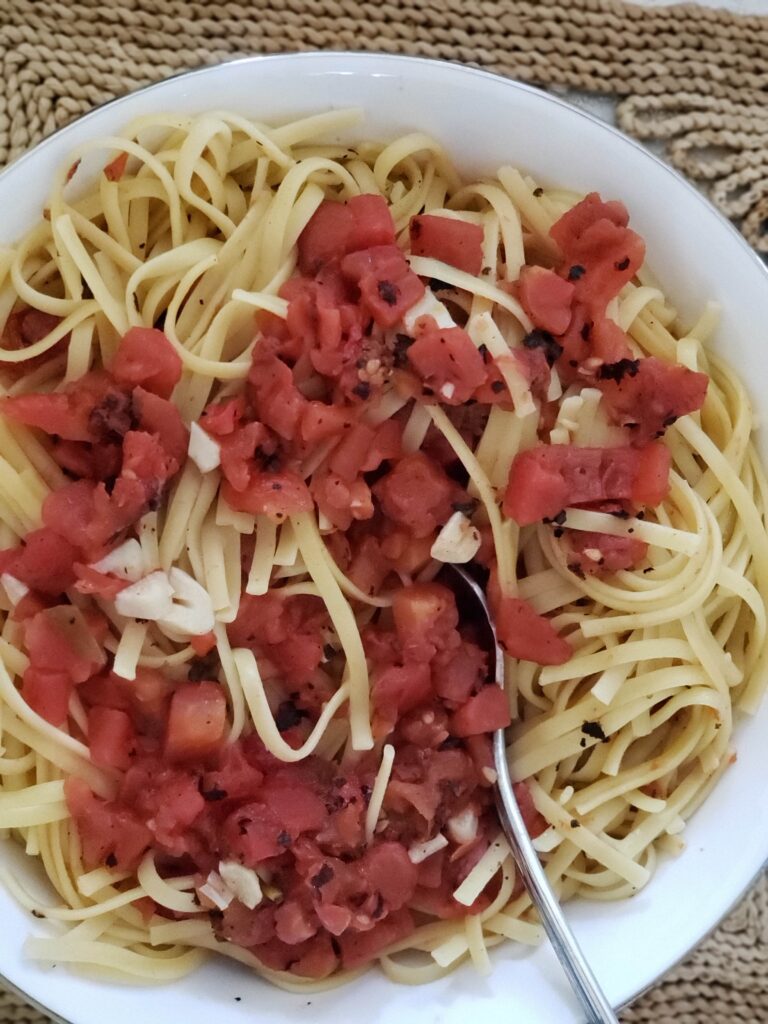
- Seafood Dishes: calamari, baked salmon, shrimp, scallops
- St. Joseph’s Day breadcrumbs to put on top of the pasta dishes. The breadcrumbs represent sawdust since St. Joseph was a carpenter.
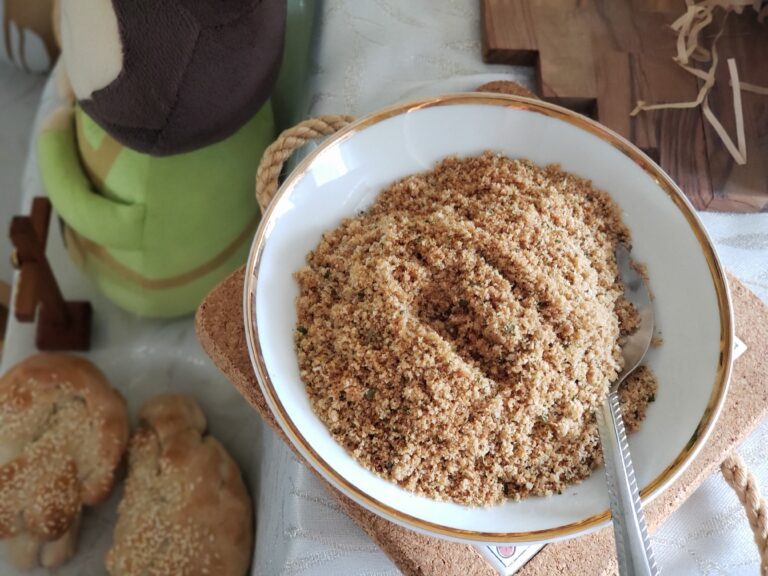
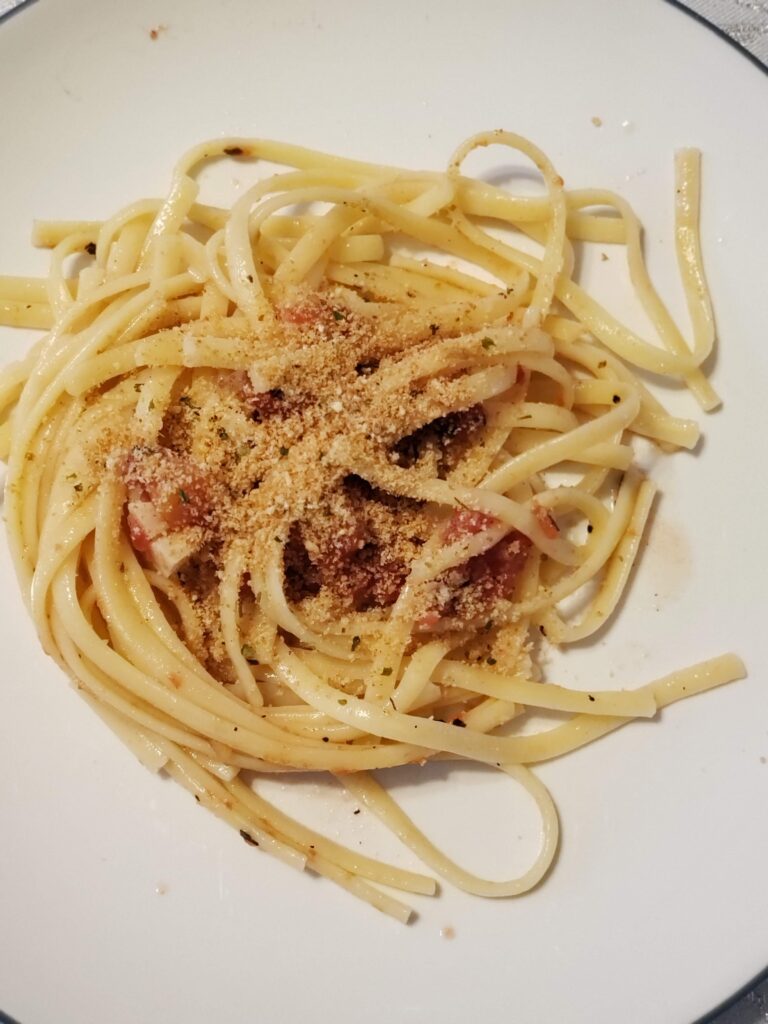
- Desserts such as zeppole, struffoli, or St. Joseph pastries. (If you have any Italian bakeries near you, they will definitely have the pastries on this day!)


Prayer to St. Joseph
Of course, no feast day is complete without a trip to Mass and plenty of prayer!
Here is a beautiful prayer to St. Joseph that you can pray for his protection over your family (from EWTN):
Oh, St. Joseph, whose protection is so great, so prompt, so strong,
before the throne of God, I place in you all my interests and desires.
Oh, St. Joseph, do assist me by your powerful intercession,
and obtain for me from your Divine Son
all spiritual blessings, through Jesus Christ, our Lord.
So that, having engaged here below your heavenly power,
I may offer my thanksgiving and homage to the most loving of fathers.
Oh, St. Joseph, I never weary contemplating you and Jesus asleep in your arms;
I dare not approach while he reposes near your heart.
Press him in my name and kiss his fine head for me and
ask him to return the kiss when I draw my dying breath.
St. Joseph, patron of departing souls – pray for me.
Amen.
Pin it for later

Sharing is caring!

A statue of a saint should never be buried. I understand this may be a “tradition” but it is one that needs to be educated about properly. Medals may be buried, but never statues. A statue represents the person, a medal does not. It’s even worse to treat a statue by placing it upside down. This practice is more voodoo than Catholic practice. It was done to “persuade” the saint to answer the prayer and the person burning the statue would then bury the statue right side up only if the prayer was answered. My source of information is from Donald H. Calloway, MIC, his book on Consecration to St. Joseph.
I don’t look to offend, only to share the same passion as you. I see that you are Catholic and homeschool, similar to me. I enjoy educating and certainly enjoy growing my family in faith. Peace!
Hi Nat!
Thank you for your comment and for the information! You are right. I can see the voodoo or superstitious aspect that some might see this as, so I will remove the bullet point and do some further research.
I think it would be ok to bury perhaps a broken statue that was blessed (which I understand is totally different than what I implied by burying the statue while asking for the intercession of St. Joseph).
I will remove that bullet point so that I can do some more research on the practice! I would not want to lead anyone astray either!
Thank you again for your charitable and informative comment, and God bless you and your family on your homeschool endeavors!